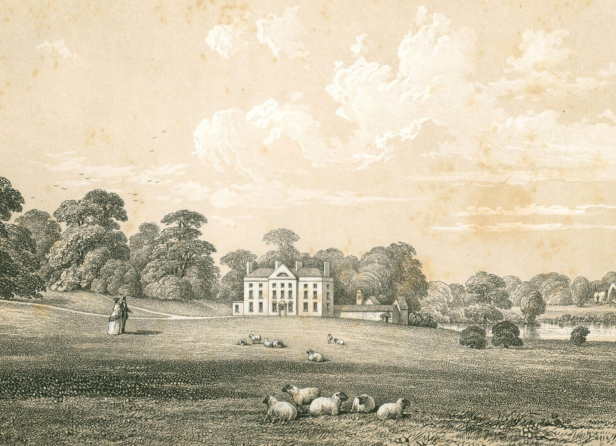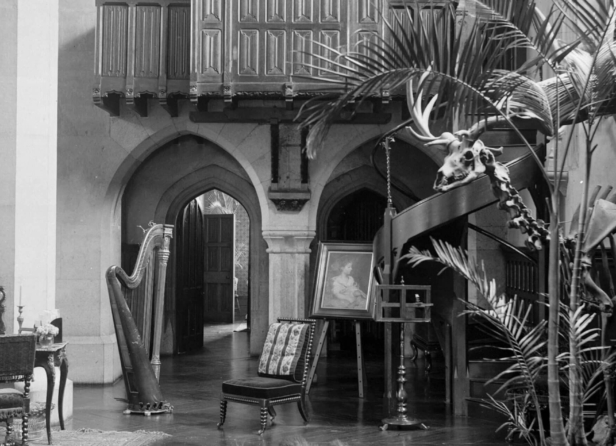Adare Manor is a tribute to the Dunravens’ sense of exuberance, wit, and style.
An example of a rare ‘Calendar House’, Adare Manor is adorned with 365 leaded windows, 52 ornate chimneys, 7 stone pillars and 4 towers to mark the annual tally of days, weeks, and seasons in a year. The Manor House is reminiscent of a chateau, sharing many features of the 19th century Gothic Revival in Britain and Ireland, and drawing inspiration from a romantic view of the chivalric past. The building displays a wealth of gargoyles, heraldry and decorative stone and wood carvings. Many of these carvings show creatures and monsters from the Bestiary, a medieval book of mythical beasts.
The interior spaces are designed on a grand scale. One of the most renowned interior spaces is The Gallery: a 132 foot long, 26 ½ foot high expanse inspired by the Hall of Mirrors in Versailles and lined on either side with 17th Century Flemish choir stalls.








